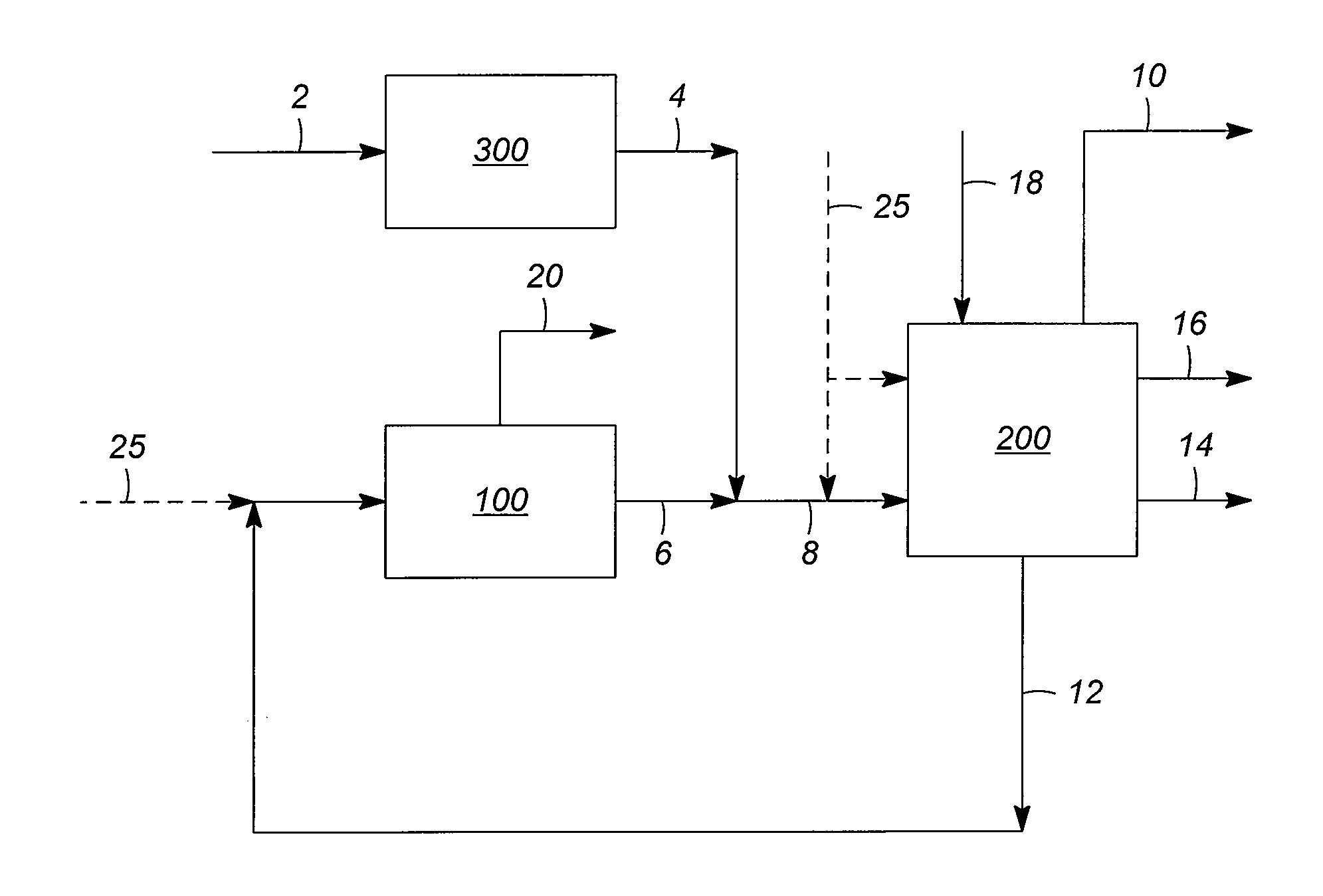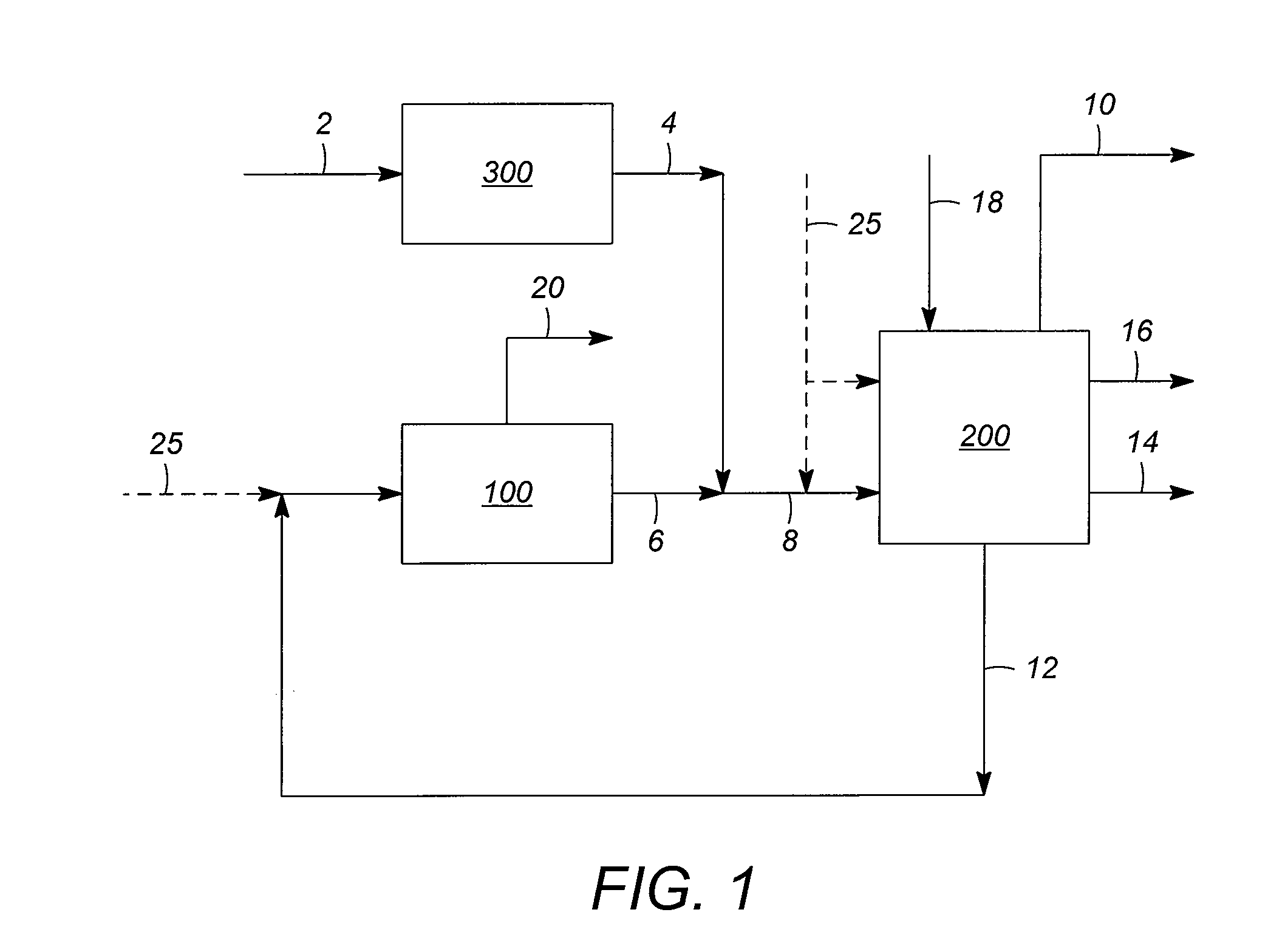Integrated processes for propylene production and recovery
a propylene and process technology, applied in the direction of hydrocarbon preparation catalysts, hydrocarbon oil treatment products, sustainable manufacturing/processing, etc., can solve the problems of significant reduction in the operation of combined propylene-containing streams and the cost of larger capacity equipment, so as to achieve significant capital and utility savings and reduce the effect of capacity
- Summary
- Abstract
- Description
- Claims
- Application Information
AI Technical Summary
Benefits of technology
Problems solved by technology
Method used
Image
Examples
example 1
[0051]In the case of a commercial catalytic dehydrogenation process, namely the UOP Oleflex™ process for production of propylene from propane, the product fractionation section comprising a depropanizer, a deethanizer, and a propane / propylene splitter, was estimated to represent about 25% of the total erected cost of a unit for 250 kMTA of propylene production. This fractionation section can be effectively eliminated by increasing the capacity of a PRU used to process LPG from FCC for propylene recovery. The overall capital cost savings of integrating a PRU with an Oleflex™ process to consolidate the fractionation sections of these processes, according to the present invention, is estimated to be about 10-15%. This savings can be sufficient to render smaller capacity processes for propylene production economically feasible, depending on the price of propylene relative to propane and other factors.
PUM
| Property | Measurement | Unit |
|---|---|---|
| temperature | aaaaa | aaaaa |
| pressure | aaaaa | aaaaa |
| temperature | aaaaa | aaaaa |
Abstract
Description
Claims
Application Information
 Login to View More
Login to View More - R&D
- Intellectual Property
- Life Sciences
- Materials
- Tech Scout
- Unparalleled Data Quality
- Higher Quality Content
- 60% Fewer Hallucinations
Browse by: Latest US Patents, China's latest patents, Technical Efficacy Thesaurus, Application Domain, Technology Topic, Popular Technical Reports.
© 2025 PatSnap. All rights reserved.Legal|Privacy policy|Modern Slavery Act Transparency Statement|Sitemap|About US| Contact US: help@patsnap.com



